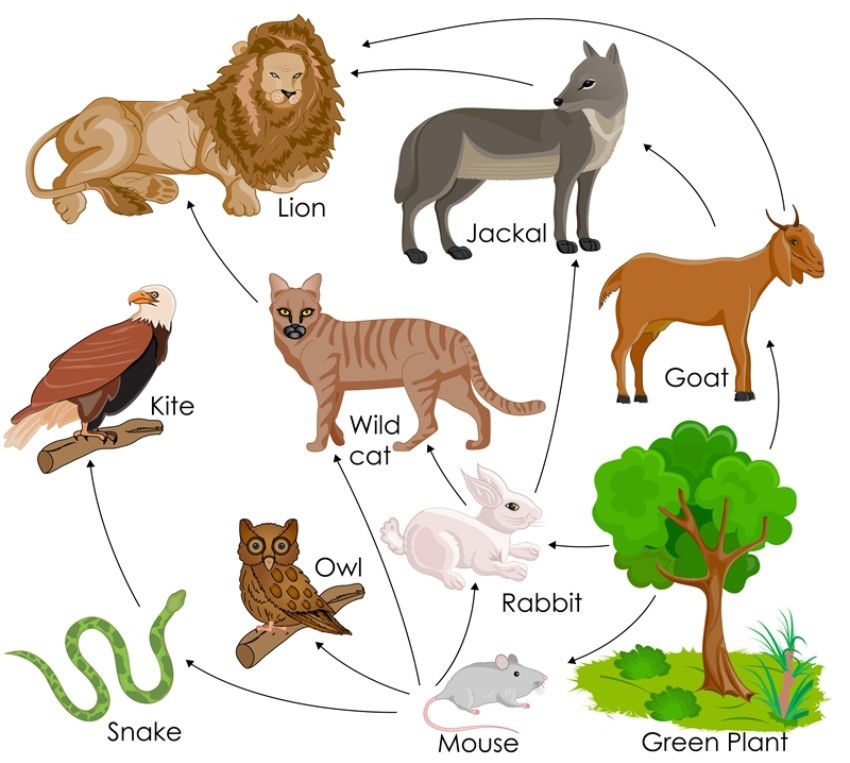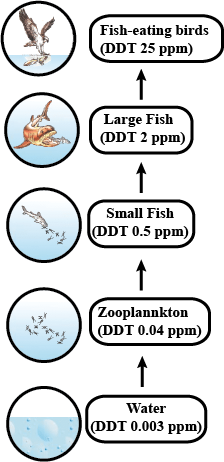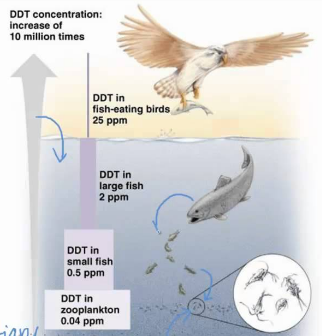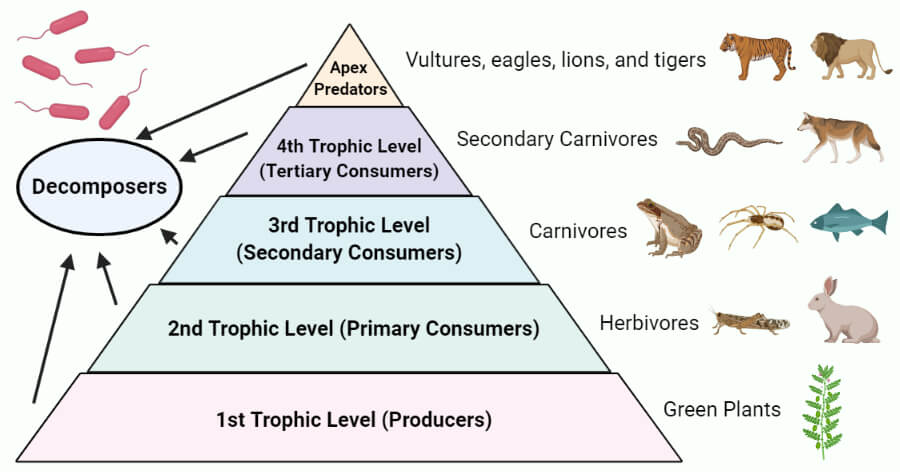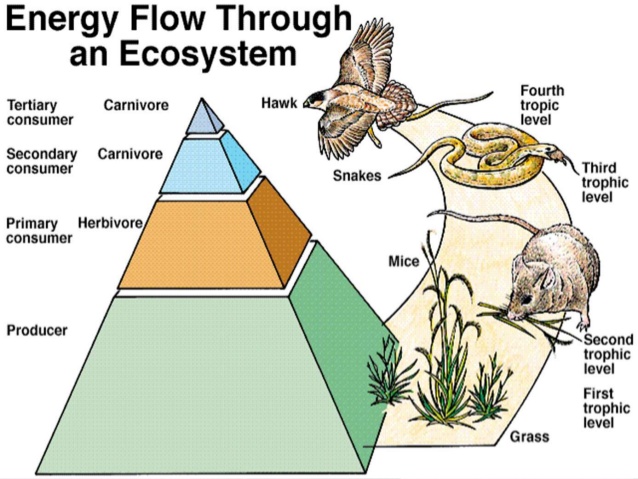Our Environment - Class 10 Biology - Extra Questions
Define primary, secondary, and tertiary consumers. Give one example of each.
Differentiate between the producers and consumers.
Paheli wrote a food chain in the following way:
Frog $$\to$$ Eagle $$\to$$ Insects $$\to$$ Grass $$\to$$ Snake
The chain is not in the correct order. Help her to write the food chain correctly.
Correct and rewrite the following statement and justify your correction.
Carnivores occupy the second trophic level in the food chain.
Carnivores occupy the second trophic level in the food chain.
Given above is a figure of an ecosystem. Answer the following questions.
(a) What type of ecosystem is shown in the figure.
(b) Name any plant that is characteristic of such ecosystem.
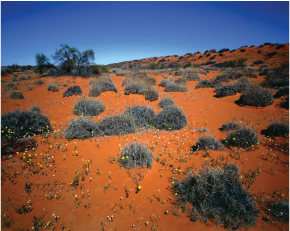
What are the substances called that are not broken down by biological processes?
Name two natural ecosystems and two artificial ecosystems.
What are top carnivores? Give two examples.
What is meant by producers in an ecosystem ?
Why bacteria and fungi are called decomposers ?
Choose each of the following from the given food web.
(i) Primary consumers
(ii) Producers
(iii) Tertiary consumers
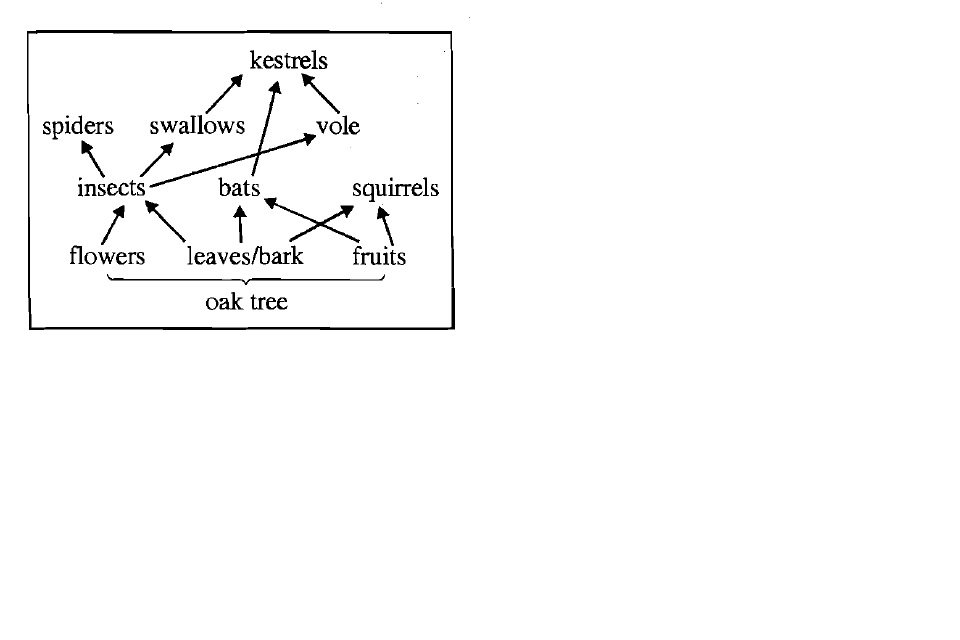
How are the biotic components of an ecosystem linked ?
The term .......... is used for both small and large ecological systems.
Complete the following food chains with appropriate links.
a) Grass $$\rightarrow$$ Grasshopper $$\rightarrow$$ ______ $$\rightarrow$$ Snake
b) Grains $$\rightarrow$$ Mouse $$\rightarrow$$ ______
What do you understand by interdependency of animals and plants?
Name an organism found as secondary carnivore in an aquatic ecosystem.
What is the main role of producer in an ecosystem?
Why are small animals important in an ecosystem?
How much energy does the lion get in the above food chain ?
The hierarchies within a food web are called _______ levels.
The waste we generate can be _________ or ___________.
In a food chain consisting of a snake, an insect, grass and a frog, assign an appropriate trophic level to the frog.
All the interacting organisms in an area together with the non-living constituents of the environment form an __________.
What will happen if all the lions from the given food chain were removed?$$Grass \rightarrow Deer\rightarrow Lion$$
Gardens and crop fields are examples of .......... ecosystem.
Define food web.
Fill in the blank by choosing the correct answer from the options of organisms of a food chain.
___________ will possibly have the maximum concentration of harmful chemicals in its body?
Peacock, Frog, Grass, Snake, Grasshopper
Peacock, Frog, Grass, Snake, Grasshopper
What is depicted in the above mentioned scheme?
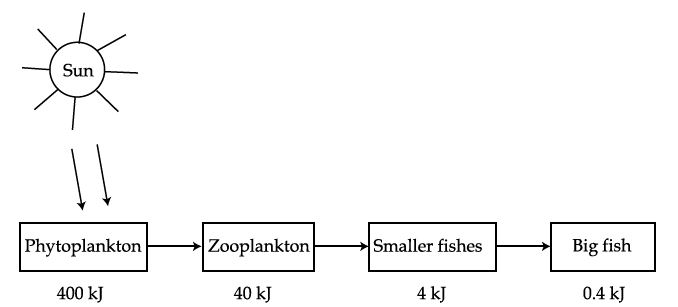
Match the column I with Column II
Organisms can be grouped as producers, consumers and _____ according to the manner in which they obtain their substance from the environment.
If all the waste we generate is biodegradable, will this have no impact on the environment?
The abiotic components of the environment are living factors.
The given statement is __________. (true/ false)
Without the __________ in a food web, many chemicals would not be recycled.
Define a trophic level.
What are trophic levels ? Give an example of food chain and state the different trophic level in it ?
What is the essential role of decomposers in ecosystems ?
What is difference between biodegradable, and non-biodegradable waste?
Differentiate between a food chain and a food web.
What are the non-biodegradable chemical wastes that are generated by human beings?
Name the wastes which are generated in your house daily. What measures would you take for their disposal?
The fundamental purpose of _____ is to describe feeding relationship among species in a community.
____________ waste is waste that degenerates the environment to zero level of tolerance in the entire ecosystem.
________ components of an ecosystem comprise the physical factors like temperature, rainfall, wind, soil and minerals.
Give any two ways in which non-biodegradable substances would affect the environment.
Why is damage to the ozone layer a cause for concern? What steps are being taken to limit this damage?
(a) What is an ecosystem? List its two main components.
(b) We do not clean ponds or lakes, but an aquarium needs to be cleaned regularly. Explain.
Name the organisms belonging to the second and fourth trophic levels in the food chain comprising the following organisms:
Frog, plant, snake, hawk and insect.
With the help of a flow chart, show the phenomenon of biomagnification of DDT in an aquatic food chain.
Depict a food chain by placing the following organisms in the correct order by their trophic levels.
Grass, Grasshopper, Frog, Snake, Eagle:
What is biomagnification?
Explain why there is no waste in a forest.
What is the basic unit of environmental study?
Distinguish degradable pollutants from non-degradable pollutants.
Very short answer type
Mention if the following statements are true (T) or false (F).
(a) Snakes are primary consumers.
(b) Some humans are strictly primary consumers & some others are of other types of consumers also.
(c) No ecosystem can survive without light.
(d) Cattle go to ponds for drinking water, so they are a constituent of the pond ecosystem.
(d) Cattle go to ponds for drinking water, so they are a constituent of the pond ecosystem.
Complete the following food chains by writing the names of appropriate organisms in the blanks.
(i) Grass $$\to$$ ....... $$\to$$ Snake $$\to$$ ..........
(ii) ........... $$\to$$ Mouse ........... $$\to$$ Peacock
"Man can be primary as well as secondary consumer". Justify this statement.
Short / Long Answer Type Questions :
Why is there always a loss of chemical energy with each step in a food chain?
Why is a food web more stable than a food chain?
What problems will arise if there is either an increase or decrease in the number of any component in a food chain or a food web?
Define relation between ecosystem and food chain.
What are consumers? How can they be categorized?
What happens if decomposers are removed from the food web ?
Draw a food chain with four trophic levels.
What are the problems caused by the non-biodegradable wastes that we generate?
"Is it possible for a species to occupy more than one trophic level in the same ecosystem at the same time"? Explain with the help of one example.
Explain the term Omnivorous.
An ecosystem can support only a limited number of trophic levels. Explain.
Define an ecosystem. Draw a block diagram to show the flow of energy in an ecosystem.
Give a diagrammatic representation of trophic levels in an ecosystem.
Given one method which could be allied to reduce our intake of pesticides through food to some extent.
Construct a food web by connecting three food chains.
What will happen to an ecosystem if:
(a) All producers are removed;
(b) All organisms of herbivore level are eliminated; and
(c) All top carnivore population is removed
Who launched this campaign and when?
Give two examples of artificial or man-made ecosystems. List the salient features by which they differ from natural ecosystems.
What will happen to grasslands if all the grazers are removed from there?
What will happen if all the carnivores are removed from the earth?
Sewage, newspaper, styrofoam, hay.
Observe the figure and answer the following questions:(a) Name the phenomenon represented in the image.
(b) Name any one organism that could be shown at 5.
(c) Name one natural element which all the organisms 2-4 and even 5 are getting 1, for their survival.

(b) Name any one organism that could be shown at 5.
(c) Name one natural element which all the organisms 2-4 and even 5 are getting 1, for their survival.
